Abstract
Bacteriocins of Clostridium perfringens were prepared by ammonium sulfate precipitation of supernatant broth from 10 bacteriocinogenic strains. These bacteriocins were compared with respect to their ability to produce spheroplasts in a sensitive indicator strain; their inducibility; sensitivity to pH, proteolytic enzymes, and boiling; and their effect on macromolecular synthesis. Two bacteriocins were stable over a wide range of pH values and resisted boiling, and three bacteriocins were resistant to trypsin. Five bacteriocins shut down DNA, RNA, and protein synthesis; three bacteriocins had varying effects on DNA and RNA synthesis; and two bacteriocins had little effect on macromolecular synthesis. Antiserum prepared against one bacteriocin highly neutralized three bacteriocins with partial neutralization of five others; two bacteriocins were unaffected. Mutant strains selected for resistance to bacteriocin 28 also demonstrated coresistance to two other closely related bacteriocins and partial resistance to five others.
Full text
PDF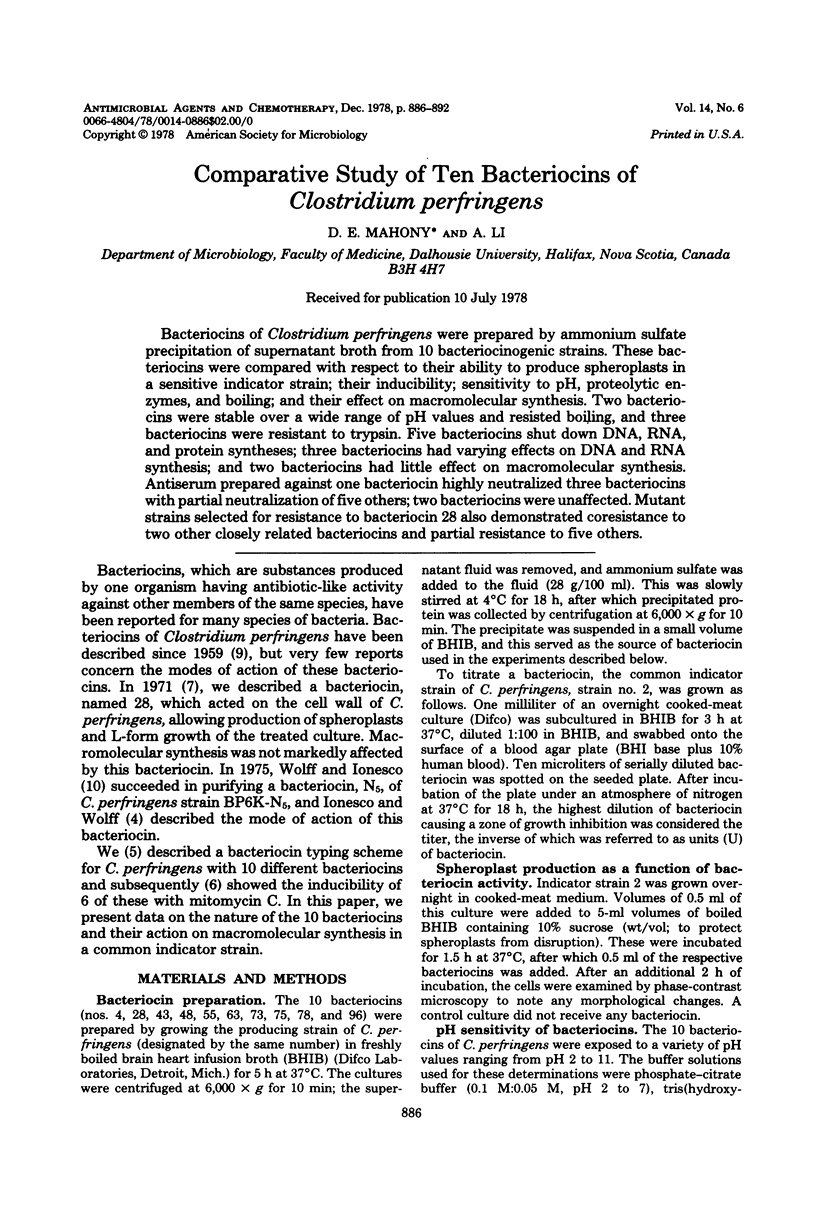
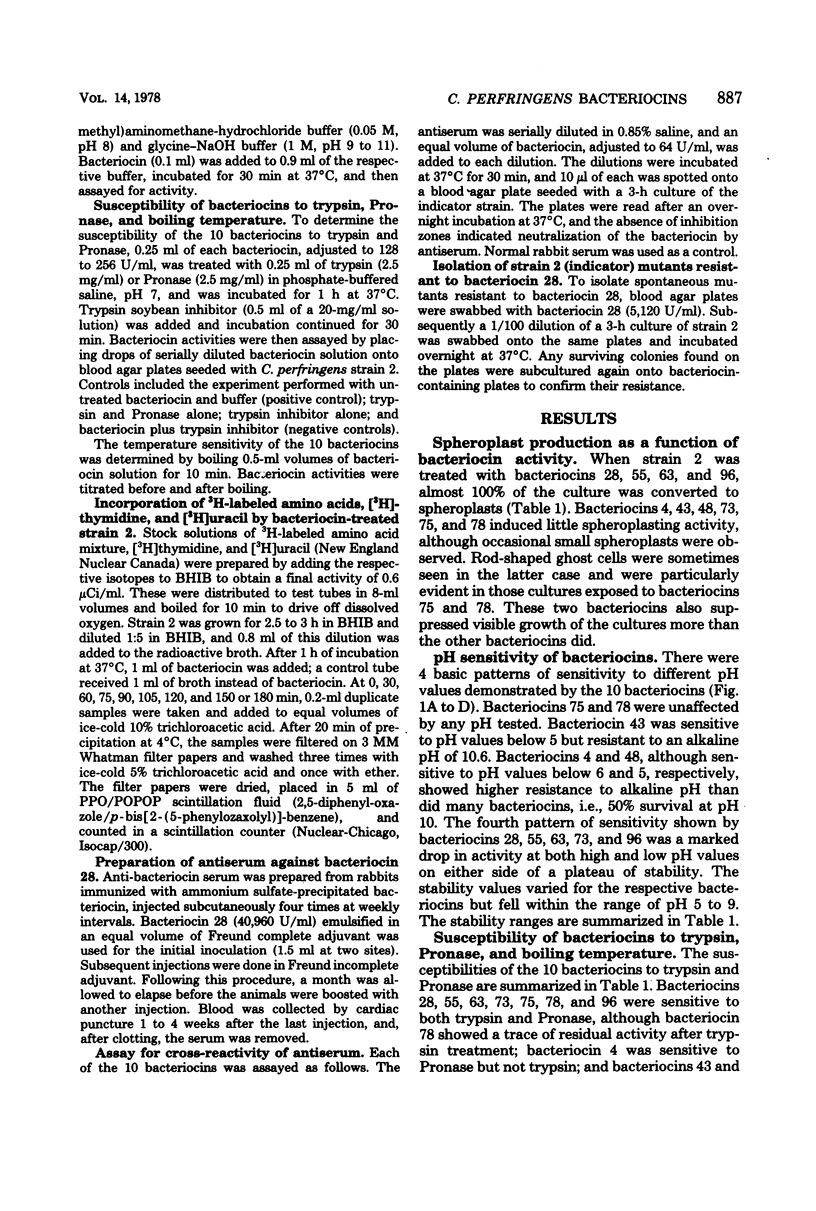
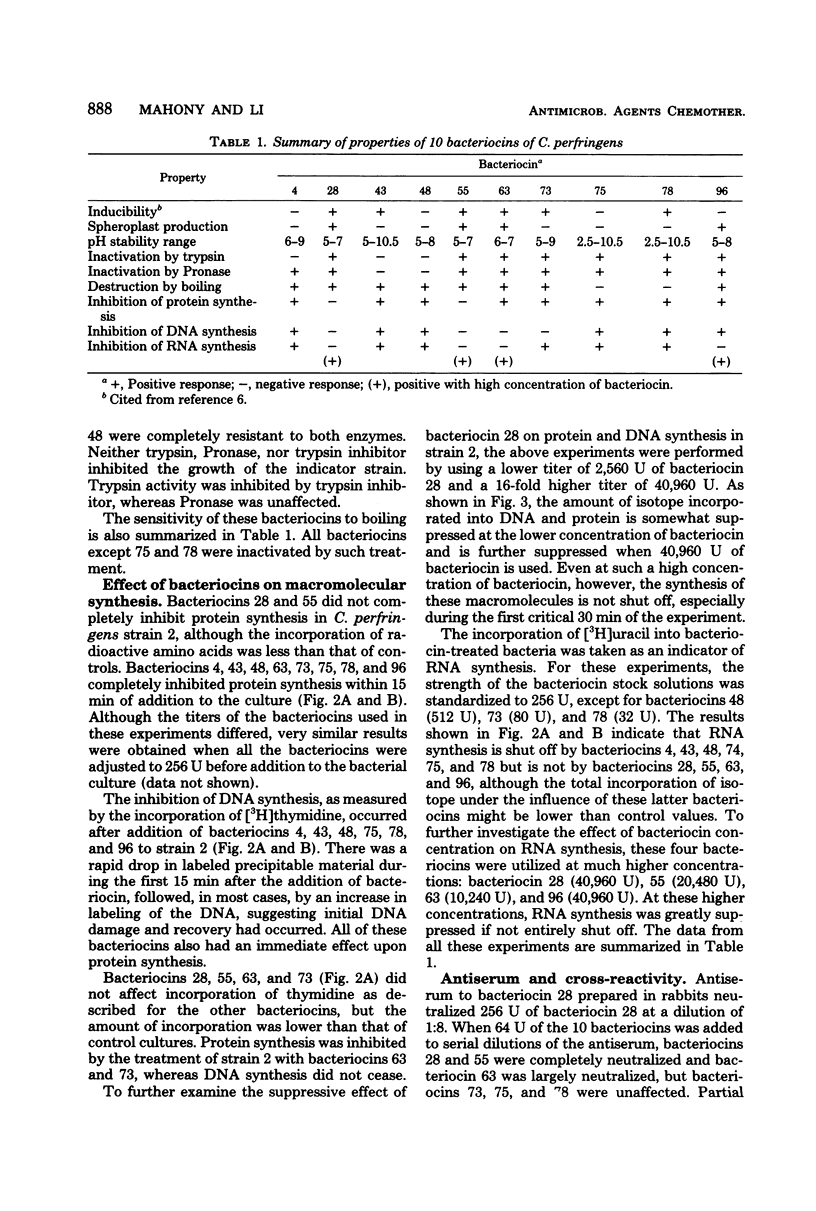
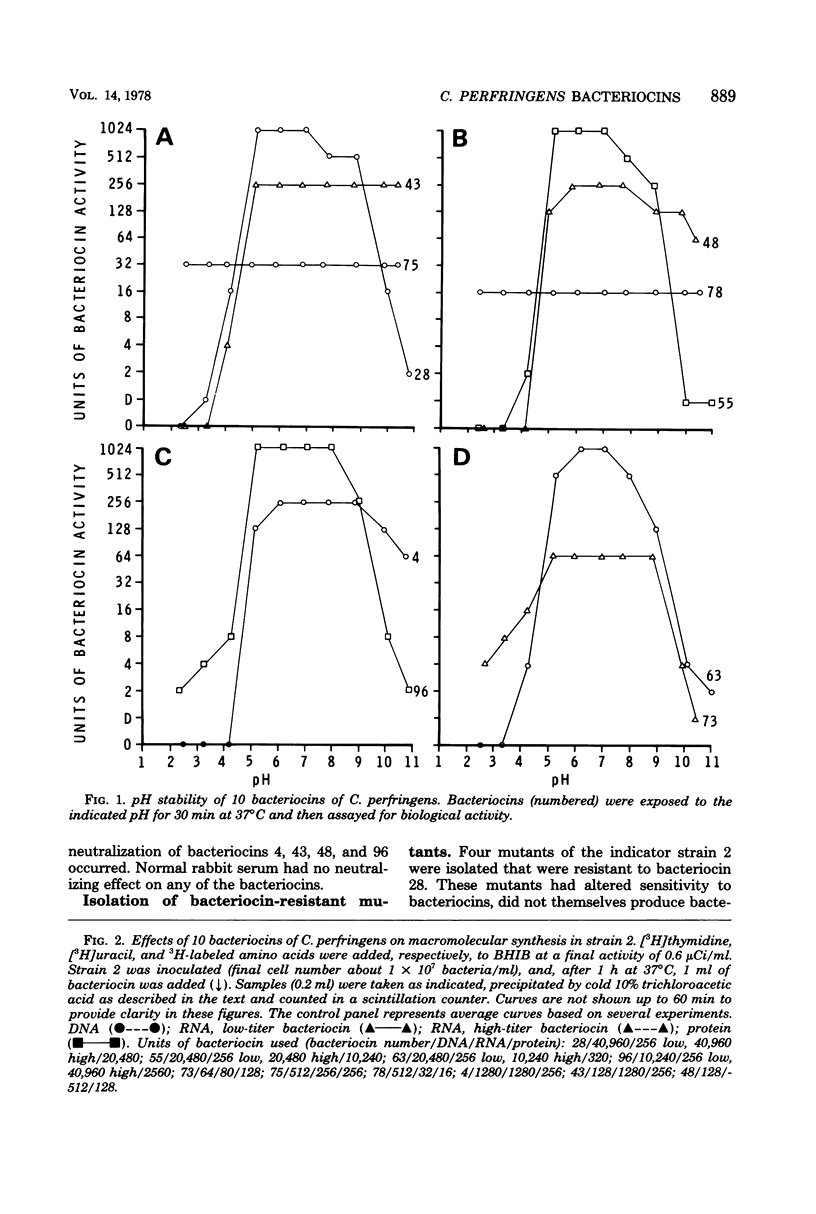
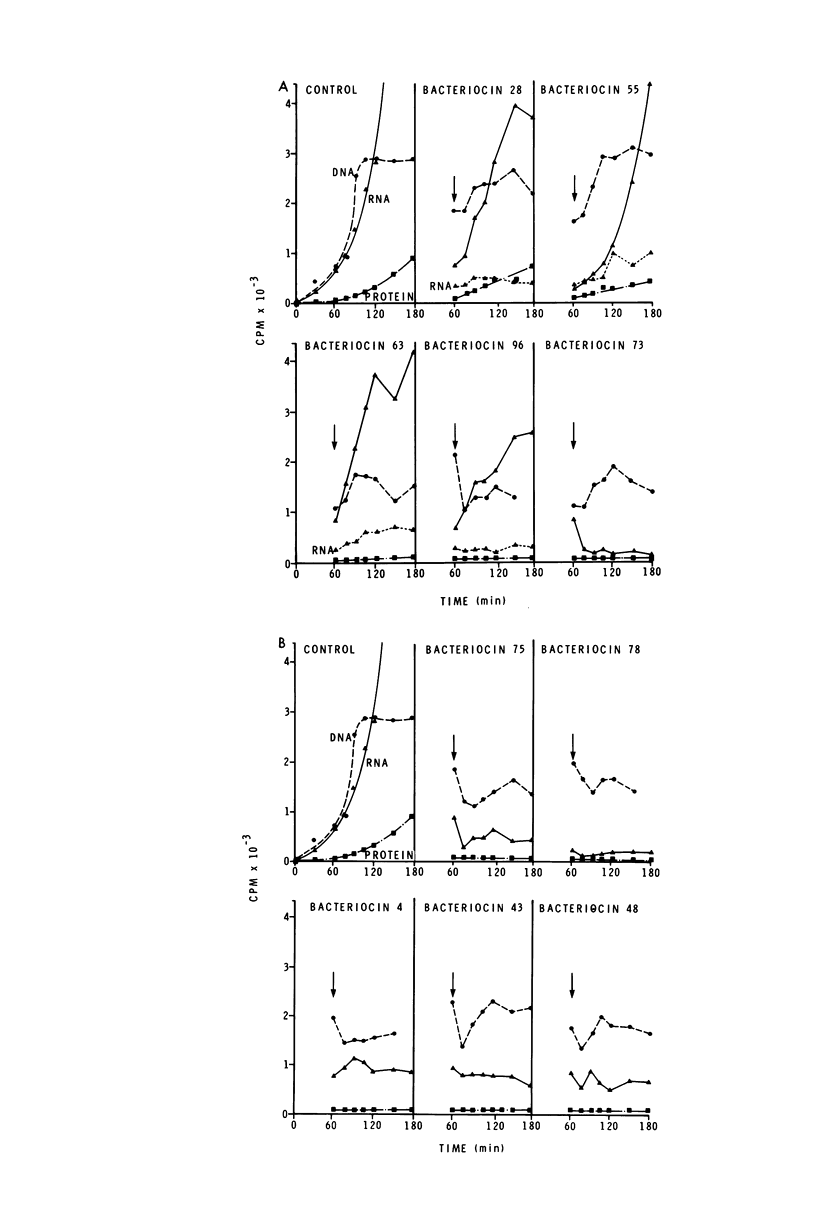
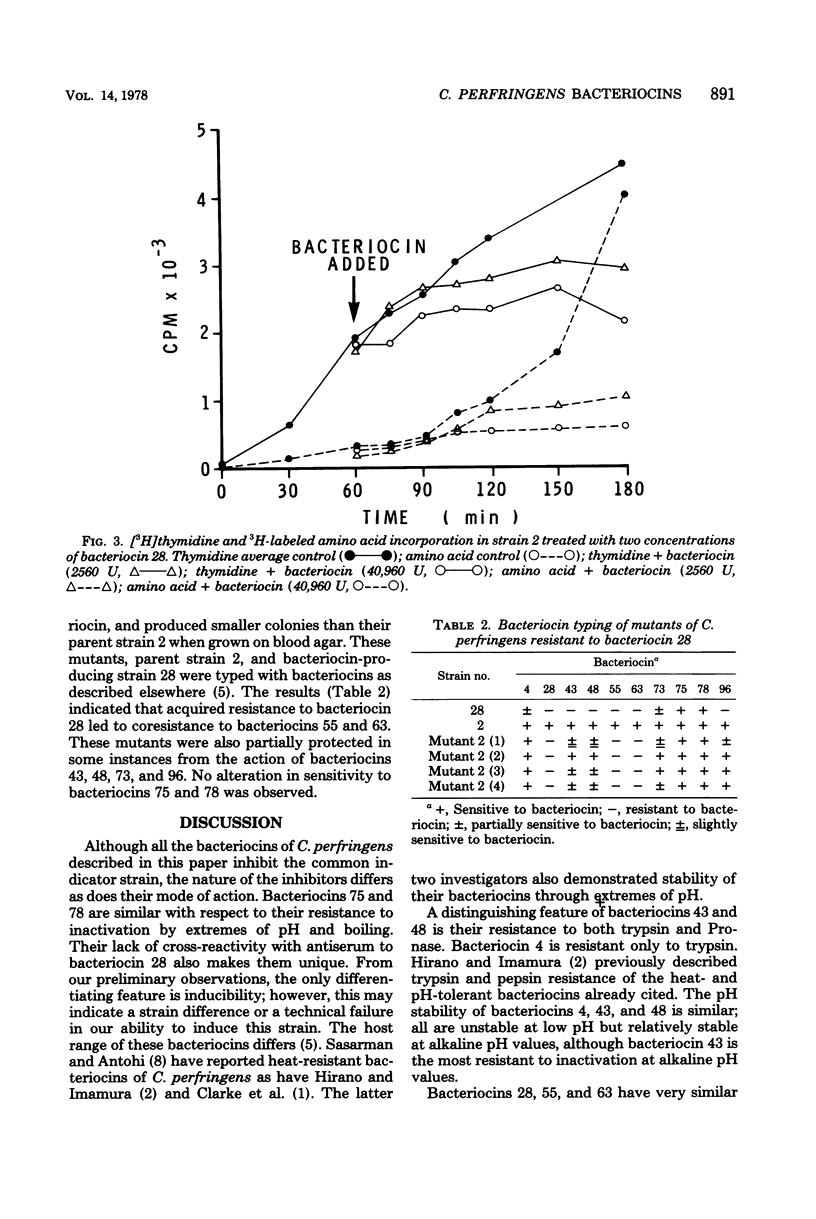
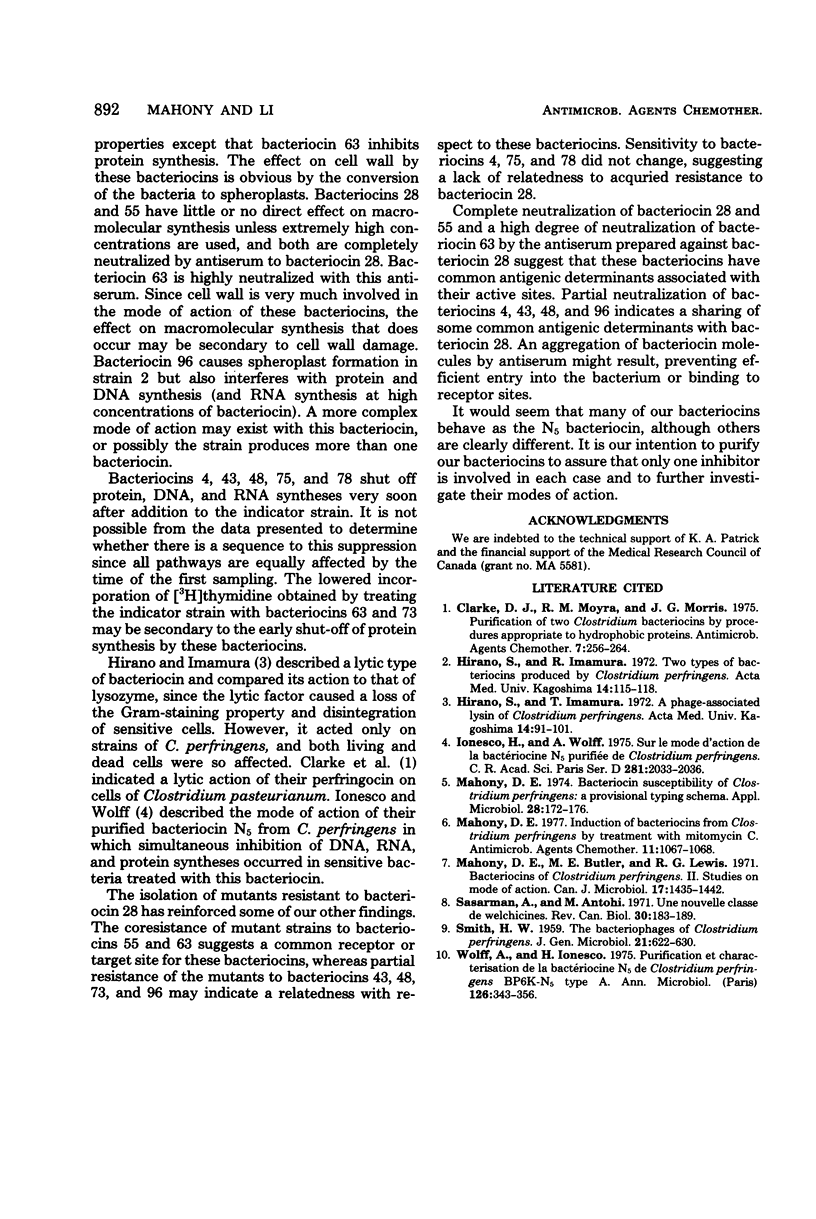
Selected References
These references are in PubMed. This may not be the complete list of references from this article.
- Clarke D. J., Robson R. M., Morris J. G. Purification of two Clostridium bacteriocins by procedures appropriate to hydrophobic proteins. Antimicrob Agents Chemother. 1975 Mar;7(3):256–264. doi: 10.1128/aac.7.3.256. [DOI] [PMC free article] [PubMed] [Google Scholar]
- Ionesco H., Wolff A. Sur le mode d'action de la bactériocine N5 purifiée de Clostridium perfringens. C R Acad Sci Hebd Seances Acad Sci D. 1975 Dec 22;281(24):2033–2036. [PubMed] [Google Scholar]
- Mahony D. E. Bacteriocin susceptibility of Clostridium perfringens: a provisional typing schema. Appl Microbiol. 1974 Aug;28(2):172–176. doi: 10.1128/am.28.2.172-176.1974. [DOI] [PMC free article] [PubMed] [Google Scholar]
- Mahony D. E., Butler M. E., Lewis R. G. Bacteriocins of Clostridium perfringens. 2. Studies on mode of action. Can J Microbiol. 1971 Nov;17(11):1435–1442. doi: 10.1139/m71-228. [DOI] [PubMed] [Google Scholar]
- Mahony D. E. Induction of bacteriocins from Clostridium perfringens by treatment with mitomycin C. Antimicrob Agents Chemother. 1977 Jun;11(6):1067–1068. doi: 10.1128/aac.11.6.1067. [DOI] [PMC free article] [PubMed] [Google Scholar]
- SMITH H. W. The bacteriophages of Clostridium perfringens. J Gen Microbiol. 1959 Dec;21:622–630. doi: 10.1099/00221287-21-3-622. [DOI] [PubMed] [Google Scholar]
- Sasarman A., Antohi M. Une nouvelle classe de welchicines. Rev Can Biol. 1971 Sep;30(3):183–189. [PubMed] [Google Scholar]
- Wolff A., Ionesco H. Purification et caractérisation de la bactériocine N5 de Clostridium perfringens BP6K-N5 TYPE A. Ann Microbiol (Paris) 1975 Oct-Nov;126(3):343–356. [PubMed] [Google Scholar]


